| Umělec 2002/2 >> The Bunny Lake Chronicles | Просмотр всех номеров | ||||||||||||
|
|||||||||||||
The Bunny Lake ChroniclesUmělec 2002/201.02.2002 Jeffrey A. Buehler | artist | en cs |
|||||||||||||
|
"Searching at this point is futile. Bunny Lake is gone. Sadly, it now appears that there was never really any hope of finding her. And, worst of all, it seems that she no longer wishes to be found.
Georgina Starr’s latest Bunny Lake installation, in an old factory space on Brick Lane in London at the end of April, stubbornly avoids putting to rest questions that arose nearly three years ago in the first two parts of the series. This is exactly how Starr wants it. The Bunny Lake project — installations, videos, and fashion catwalk slaughter — are all elaborations on themes that splinter away from a single, half-remembered film seen as a teenager. But it’s with her latest (and possibly final) installation, Bunny Lake Drive-In, that these themes are capable of moving us closer to the dark but tender heart of Starr’s world. The words “Bunny Lake Drive-In” lash across the face of the crumbling textile factory, demanding further exploration. They can be seen through the chain link fence that runs along Brick Lane. This is old London, now a Bangladeshi neighborhood famed for its curries and bagels, but still Jack the Ripper’s old stomping grounds. The fresh graffito blends in naturally with the empty parking lot of broken bottles and trash. The flat-roofed building appears to have slunk away from the street, and, low like a dangerous animal, it glares from behind its fence. I glare back, and promptly plunge into its cool darkness. The space is perfect, rough and gutted, high ceilings and solid wood beaming. A jazzed-up white three-wheeled Model 70 Invacar for the disabled, complete with flames on the hood, purrs too-cool-to-be-true in the middle of the darkened room. On one wall, flashing yellow marquee lights trace a blank movie screen and on the left a film plays on another screen — a film of folks taking in a film at a drive-in cinema, before being gassed by their own car fumes after young girls pop unexpectedly out of car trunks and extend their exhausts to their windows. I crunch through popcorn and spilt drinks on the floor. The car farts white steam. I’ve managed to come early to Starr’s opening (meaning on time), so the room is nearly empty of people, and filled with sound. Everything vibrates strangely with discordant interchanges of sound stream. Plangent tones seep through from the adjoining rooms. I investigate. In the first, a video projection Stevie’s Eye along one wall is showing a complicated intertwining of two films, Targets (Peter Bogdanovich, 1967) and Bunny Lake is Missing (Otto Preminger, 1965). The music, echoing airily down from the dark dripping chambers behind, is a heart-rending rendition of “Blue Eyes” by what could be a thirteen-year-old boy or girl. Alone again, I find myself watching Stevie’s Eye a second time, the careful melding of images, psychosis and music. After a moment it settles. The lonely outcast from Targets — based loosely on the real-life story of Charles Whitmann, the man who went on a killing spree in Texas, killing sixteen people and wounding thirty — winds up behind the screen of a drive-in movie screen with his rifle. The trunk pops open in Bunny Lake and the little missing heroine is revealed for the first time. Stevie, Bunny’s brother, carries her into the house. The camera moves in on his eye. There is madness and violence here, connecting us to the first room, but it’s not forced or random, with an undercurrent of terrifying poetry. In the third room, down a slippery flight of stairs, on a large white wall still redolent with white paint on concrete, is the third projection, Bobby Bunny Buffer. Kitsch, pop color splendor and cheese all rolled into one, this handsome nugget of a man, with leering sexy serial killer eyes, buffs his Bunny mobile with long languorous strokes. I cull from the catalogue that the film is a shot-for-shot remake of Kenneth Anger’s 1965 hot rod classic, Kustom Kar Kommandos. It makes you laugh, and, as with the rest of the installation, a rather inexplicable cold hand slides over your heart. What Goes Missing Always Comes Back To know where Starr’s coming from, some background information may be helpful, but it is not altogether necessary. Like much of her work, this installation operates more on an intuitive level of basic color, humor and design in order to bring you into intimate contact with the artist, rather than on any heavy intellectual concept. However, there is always the danger that the work will come across as nothing more than a poisonous candy-colored whorl of pop-cultural allusions and possible madness. The core of Starr’s work on the Bunny Lake project (it’s not really a series or a formal narrative in any sense) goes back to the first time she watched the little-known Otto Preminger classic, Bunny Lake is Missing, while babysitting her sister. “A lot of my work has to do with film history and how I remember films. I’ve made work in the past trying to remember certain movies I’d seen as a child, rewriting the script and reenacting it.” In this case, the movie, and the fact that the sisters never watched it to the end, seems to have had a profound effect on Starr. The plot of Bunny goes something like this: Ann Lake, an American woman, registers her four-year-old daughter, Bunny Lake, at a London school. Only the girl never shows up for her first day, and the school says they know nothing about her. The police poke around and discover that the mother, who is unwed, had an imaginary playmate named Bunny as a child. Soon the police, as well as the viewer, begin to doubt that the girl even exists. The physical absence of Bunny powers the film forward and is its central mystery. When doubt creeps in, the viewer begins to question the sanity of the mother, half-crazed with worry. In the catalogue made for the show, Starr contributes a personal text about her sister: her sister who was adopted, her sister who stole things, who spent most of her teenage years in prison and who pushed and tested her family for all they were worth and for the love she sought. This openness, the tendency to leave herself vulnerable, is a classic Starr touch, and one I appreciate very much. By cracking open the door, the whole series suddenly takes shape in my mind, as it draws its energy from this one, deeply angry and troubled source. In the end, it doesn’t really matter who or what it is. Starr writes of her sister: “Something in her heart was aching and nothing could touch her. Could we ‘save’ her? We all tried. Deep down, I think she did not want to be saved at all.” It’s easy to see how this approach might disappoint the heady Goldsmith’s crowd. It’s all too sincere, honest and brutal. And it just may mean too much. Bunny is found in the trunk of her brother’s car at the end of the film, where she had been curled up for the duration of the action in the movie — about twenty-four hours — while her mother frantically searched for her. The jealous brother, Stevie, had planned to murder Bunny, but his plan was foiled. “But what then,” Starr asks me over coffee, just down the street from the show, one rainy day after the opening. “What happens to a girl who’s been crammed for an entire day in the boot of a car?” What, after all, is the source of any unleashing of energy, artistic or otherwise? This appears to be Starr’s personal point of departure. Blueprint Your Murders Like an architect with his blueprints, Georgina Starr first painted a watercolor of the former Reseda drive-in cinema in the San Fernando Valley, California. Flat and unreal, it is a strange work of low long-bodied 1960s American cars with snarling grills full of necking teenagers and suspicious little girls with bunny ears. The image functions as a schematic for the entire series, which explodes out from its surface into an intricately constructed fantasy world. The first installation, The Bunny Lakes are Coming (Anthony Reynolds Gallery, London, 2000), takes from the drive-in painting a magpie and golden ring, and places them on a freestanding brick wall (perhaps the garden wall in the film?). The installation contains images of powerful-looking young women wearing Bunny Lake T-shirts, and there’s a video projection of a girl hanging herself. Again the music that gets you, this time a sorrowful Tim Hardin song, “Misty Roses.” Girls both coming and going, in and out of life and purpose. With all the photos of the girls in Bunny Lake apparel, for the first time we see the fragmentation of the missing girl. The Bunny Lakes Collection — performed first for Pinksummer, Genoa, and then the Venice Biennale, 2001 — was an enhancement of, and not an addition to, the first installation. For the show Starr created a collection of clothes to be worn for a catwalk performance. White, translucent gowns that render the bony models more wraith than human. “It’s almost like they’re dead before they’re shot,” Starr says. In this case, the models become the targets of rage. During the crowded show a gang of young girls (now Bunny Lakes) pushes its way through the crowd and guns them down, mid-strut. The audience, most of whom were unaware that this was a performance, reacted exactly how an audience might if witnessing fashion models waft to the stage as artificial blood and bullets fly from very real looking guns wielded expertly by preteen, angelically clad little girls with dark eyes and an obvious chip on their shoulder. They screamed and laughed. The video of the performance is excellent, as the girls round the alley corner approaching the show with their guns drawn and beckoning the others, “come on, let’s go,” a la Scorsese and that bunch. Again, it could be very funny, but the hand stops you just short of laughing. With typical reservation, Starr admits no specific message in the action. There is no angry-women’s-fashion-children-and-violence-with guns-thing apparent. The models are the targets of rage and what’s happening is simply cause and effect, on a very gut level. This brings us back to Bunny Lake Drive-In, the most showy, dark and elaborate of any of the Bunny Lakes to date. A City Stroll to the Heart of Madness Bunny Lake Drive-In was the first to be written and designed. It’s true, this one came first in concept, but was the last to be made, as Starr didn’t have the funds. So she shelved it and worked on the offshoots instead, creating a kind of space or vacuum at the center. This could account for some of the suspense and mystery surrounding the shows. But far from wrapping things up, the show seems to suggest an even deeper opening of possibilities. Starr herself admitted that there are still elements that intrigue her, the garden behind the house in Bunny Lake is Missing, for one. Starr’s influences have always been more pop culture than art history, with significant credit given to Italian horror master Dario Argento. The influence shows itself at odd and appropriate angles, such as her skill with ambient music and sound. (From a random website: “Suspiria [1979] Italian horror auteur Dario Argenta at his dreadful best. If the soundtrack doesn’t scare you shitless, the protracted, daringly imaginative death scenes will.”) Starr admits, almost blushingly, that she has a hard time with horror movies and can’t watch them through to the end. But one method she has of relating to a horror film she wants to see is first to record the soundtrack and then walk around her neighborhood listening to it on headphones. Watching someone haul their trash to the street during a particularly brutal stabbing scene must give reality a whole new twist. This is especially evident in the projection Stevie’s Eye. This room now seems to me the heart of the entire project, from beginning to end, three years of work. Here is where things get darkest. The hopelessness and the almost crushing sadness that permeate the room come not from Bunny Lake, but from the madness of the male characters, who, unable to deal with their pain, set the story in motion. For them, the branch has broken. Nobody knew it would turn out like this, only it’s too late. And now, in the words of David Beech, “The Bunny Lakes aren’t on the side of law and order; they want more than that.” "
01.02.2002
Рекомендуемые статьи
|
|||||||||||||
|
04.02.2020 10:17
Letošní 50. ročník Art Basel přilákal celkem 93 000 návštěvníků a sběratelů z 80 zemí světa. 290 prémiových galerií představilo umělecká díla od počátku 20. století až po současnost. Hlavní sektor přehlídky, tradičně v prvním patře výstavního prostoru, představil 232 předních galerií z celého světa nabízející umění nejvyšší kvality. Veletrh ukázal vzestupný trend prodeje prostřednictvím galerií jak soukromým sbírkám, tak i institucím. Kromě hlavního veletrhu stály za návštěvu i ty přidružené: Volta, Liste a Photo Basel, k tomu doprovodné programy a výstavy v místních institucích, které kvalitou daleko přesahují hranice města tj. Kunsthalle Basel, Kunstmuseum, Tinguely muzeum nebo Fondation Beyeler.
|







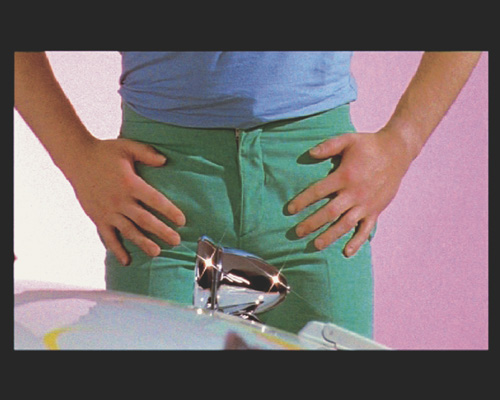
















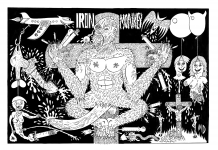




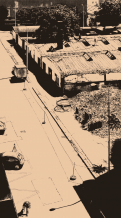
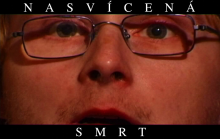
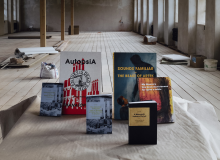
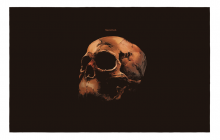


 We Are Rising National Gallery For You! Go to Kyjov by Krásná Lípa no.37.
We Are Rising National Gallery For You! Go to Kyjov by Krásná Lípa no.37.
Комментарии
Статья не была прокомментированаДобавить новый комментарий